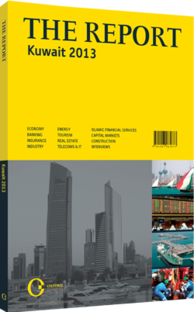Bricks and mortar: Property remains a popular investment class among local players
The development of Islamic financial services (IFS) in Kuwait over the past decade and a half corresponds to the rise and fall of real estate throughout the GCC over the same period. From the early 2000s until the international financial downturn in 2007-08, local sharia-compliant banks and companies invested heavily in the regional real estate market, which, in turn, grew substantially. Similarly, beginning in 2009, activity in the local real estate sector dropped off, and the ensuing credit crunch adversely affected market sentiment and prices in the IFS industry. As of late 2012, after five years of relatively stagnant development, both sectors were beginning to see signs of recovery. New rules and regulations put in place by the government have had a positive impact on both industries. With this in mind, the IFS sector’s symbiotic relationship with real estate is expected to continue for the foreseeable future.
MATTER OF PRINCIPLE: The correlation between IFS and real estate can be traced back to the rules underpinning Islamic finance. Under sharia law, Islamic banks and other financial institutions are prohibited from dealing with riba (interest), gharar (uncertainty) and maisir (gambling). In short, speculation is forbidden – every transaction must be backed by a real, tangible asset, which can be land, equipment or a commodity. Consequently, IFS companies often invest heavily in real estate. In 2010 real estate accounted for around 24% of the total assets held by GCC-based Islamic banks, compared to 16% among conventional banks, according to the “World Islamic Banking Competitiveness Report 2012/13”, published by Ernst & Young.
TOOLS: Unlike conventional banks, which generally hold property in the form of loans (with attendant interest rates), IFS institutions generally gain exposure to real estate through profit-sharing contracts. In an Islamic murabaha deal, for example, the IFS institution will purchase a property or a share of a property outright, then sell it to the borrower at a profit, which will be clearly delineated in the contract. In a musharaka deal, an IFS institution and a borrower contribute capital to a company or project with the intention of sharing both profits and losses. Sharia-compliant banks make use of a number of other profit-sharing arrangements on a regular basis, depending on the situation.
COLLABORATION: Kuwait’s IFS sector remains heavily invested in real estate today. Both Kuwait Finance House (KFH) – the country’s largest Islamic bank – and The Investment Dar (TID) – the country’s largest sharia-compliant investment firm – are among the top real estate players in the region. KFH, which currently holds more than 71% of Kuwait’s Islamic banking assets, is widely considered to be a pioneer in sharia-compliant property investment. Established by the government in 1977, the firm is responsible for introducing now-common Islamic models such as murabaha to the local market. After a fall in profits in 2011, KFH initiated a company-wide restructuring effort, with the goal of either selling, merging or reorganising all unprofitable subsidiaries. As part of this effort, in early 2013 the firm consolidated its real estate assets under KFH Real Estate, a new, fully owned investment vehicle that will handle all of the company’s previously disparate property holdings. “The launching of KFH Real Estate emphasises the importance of this asset class and its paramount role as a cash-generating asset as well as its attractive risk-adjusted return,” Shaheen Al Ghanim, KFH’s general manager of international banking and acting chief investment officer, told local press in March 2013.
TID, which is currently in the midst of restructuring after defaulting on a sukuk (Islamic bond) during the crisis, also remains heavily reliant on real estate. While the company’s direct exposure to the property sector in recent years has hovered around 10-12%, many of its financing arrangements have made use of real estate as a key underlying asset. Indeed, the $100m sukuk that eventually led the company to default in 2009 was underpinned largely by property. While the long-term results of TID’s restructuring efforts are as yet unclear, real estate is expected to continue to play a major role in the company’s books for the foreseeable future.
You have reached the limit of premium articles you can view for free.
Choose from the options below to purchase print or digital editions of our Reports. You can also purchase a website subscription giving you unlimited access to all of our Reports online for 12 months.
If you have already purchased this Report or have a website subscription, please login to continue.

